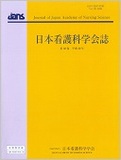Japanese
English
- 販売していません
- Abstract 文献概要
- 参考文献 Reference
要旨
目的:2年次後期の小児看護学演習科目における看護過程の展開でジグソー法を取り入れたアクティブラーニングを実施した.その実施後の学生からの評価について示した.
方法:学生76名を4人1組19グループに分けた.4つのアセスメントの視点(疾患・治療,生活,成長・発達,家族)ごとにエキスパートグループでアセスメントを深め,もとのジグソーグループに戻り教え合った.その後,関連図作成,問題明確化,計画立案をした.全体での発表の後にアンケートを配付した.
結果:65名より有効回答があり,「積極的に参加できた」「責任を持って参加できた」という学生が9割以上を占め,ジグソー法の満足度は平均80.5点であった.
結論:ジグソー法を取り入れたことで,学生はグループに対する自身の課題と責任の所在が明確になり,積極的な姿勢で参加ができた.本調査では学生からの満足度は高く,好意的に受け入れられていた.
Purpose: We conducted an active-learning program on nursing process of pediatric patients using the jigsaw classroom among nursing sophomores. We prepared a practical report on it including its evaluation by the students.
Methods: The participants included 76 students who were divided into 19 groups of 4 students. Students organized expert groups for each of the following four assessments: Disorder and treatment, life, growth and development, and family. The students discussed the each of assessments in expert groups. Students returned to jigsaw group and taught each other about the assessment. Students described concept maps, clarified nursing problems, and made nursing care plans. After students' presentation, we distributed questionnaires.
Results: After active-learning, 65 students responded to the questionnaire. Most students answered “I was able to participate positively” and “I was able to participate responsibly.” The average of their satisfaction with jigsaw classroom was 80.5 out of 100.
Conclusion: Students were able to participate positively by clarifying their own tasks for group and responsibilities within the jigsaw classroom. There was a high degree of satisfaction about the jigsaw classroom among students. Students regarded jigsaw classroom as a favorable learning method.
Copyright © 2018, Japan Academy of Nursing Science. All rights reserved.


